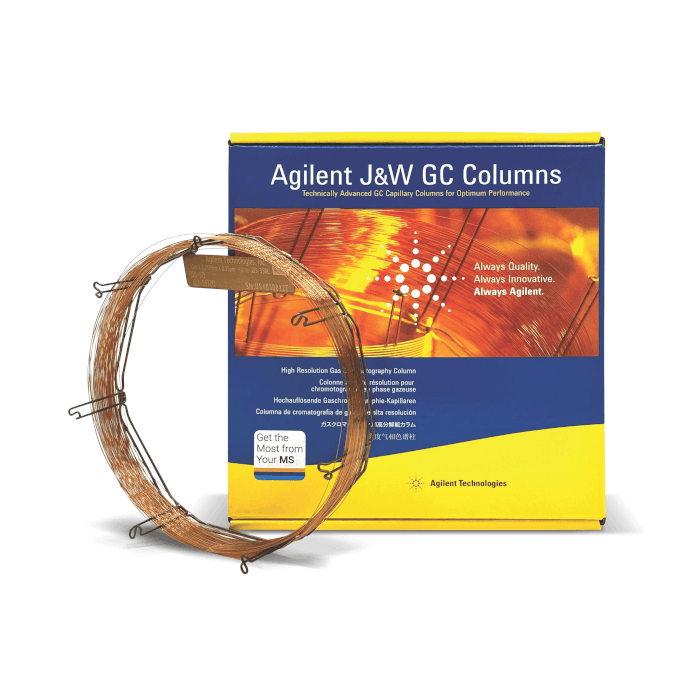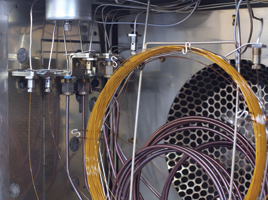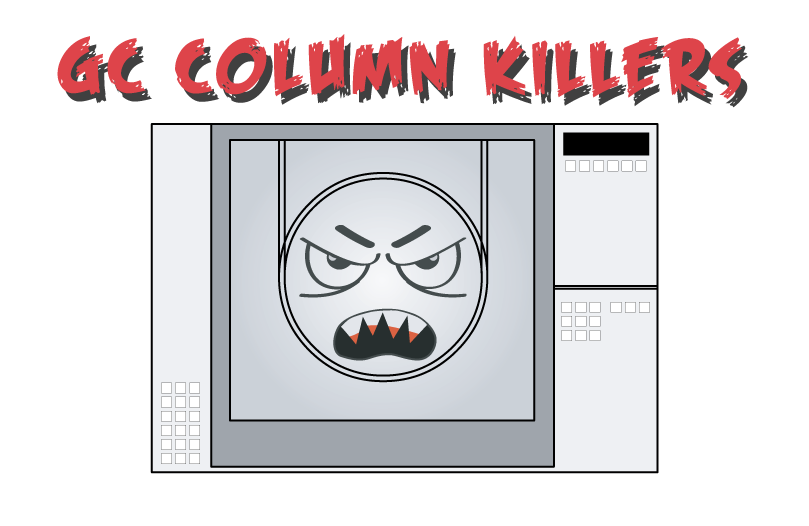In the world of gas chromatography/mass spectrometry (GC/MS), your column choice can define the accuracy, reliability, and efficiency of your results. Agilent J&W DB-5Q and HP-5Q GC columns stand at the forefront of innovation, engineered to meet the demands of complex and trace-level analyses. These columns are designed to provide low-bleed performance, high sensitivity, and outstanding durability, making them a gold standard in GC/MS applications. Let’s explore how these new columns can transform your laboratory's mass spectrometry capabilities.
Cutting-Edge Innovation: 50 Years in the Making
Agilent has been a leader in GC column technology for over five decades. As the company celebrates the 50th anniversary of its J&W GC columns, it continues to push the boundaries of what’s possible. The DB-5Q and HP-5Q GC columns are the result of this legacy of innovation, bringing together ultra-low-bleed technology, superior inertness, and robust high-temperature performance.


Figure 1: Agilent J&W innovations have continually raised the bar for GC column performance [1]
Ultra Low-Bleed Performance: Clearer Results, Greater Accuracy
Column bleed – where components of the stationary phase degrade and interfere with results – is a persistent challenge in GC/MS analyses. This can lead to spectral interference, elevated baselines, and ultimately compromised data quality. DB-5Q and HP-5Q columns combat this issue with ultra-low-bleed technology, significantly reducing siloxane bleed even at high temperatures.


Figure 2: Agilent J&W 5Q GC columns have significantly lower bleed profiles compared to conventional 5ms columns [2]
This low-bleed performance enhances the clarity of your results, offering more stable baselines and improving mass spectral identification. It's a critical feature for applications that require high sensitivity, ensuring that even trace-level analytes can be accurately detected and quantified. As illustrated in Figure 3 the 5Q columns significantly reduce interfering ions (usually m/z 207 and m/z 281), maintaining accuracy and spectral fidelity.


Figure 3: Bleed spectra at 330°C of conventional 5ms columns compared with Agilent J&W DB-5Q columns [2]
Ultra Inert Performance: Optimised for Sensitive Compounds
In GC/MS, non-inert columns can cause peak tailing, which leads to loss of sensitivity and inaccurate quantification, especially when dealing with active or trace-level compounds. DB-5Q and HP-5Q columns feature industry-leading ultra-inert deactivation chemistry, specifically designed to maintain the integrity of sensitive analytes.


Figure 4: Agilent J&W 5Q column tested with demanding UBER One test probe mixture to ensure consistent, reliable performance for challenging active analytes [1]
This ensures high sensitivity across a wide range of analytes, making these columns ideal for regulatory environments where ultra-low detection limits are a necessity. The balanced deactivation chemistry also allows the 5Q columns to handle complex multi-class analyte panels, making them versatile for challenging applications. The HP-5Q column is particularly suitable for pesticide residue analysis and demonstrates improved peak shape for active compounds.
Quick Conditioning and Durable Design: Maximising Uptime
Laboratories thrive on efficiency, and downtime can significantly impact productivity. DB-5Q and HP-5Q columns are designed to reduce the time spent on column conditioning and exchanges. Their ultra-fast conditioning properties allow for a stable baseline in under two hours, meaning your lab can return to operation quickly.


Figure 5: Conditioning profile at 350°C collected on a conventional 5ms column and an Agilent J&W HP-5Q column [2]
These columns also exhibit outstanding durability, withstanding high-temperature cycles up to 350°C without significant degradation. This robustness means fewer column replacements, reduced costs, and longer uninterrupted analysis cycles.
Identical Selectivity to Current 5ms Columns: Easy Method Transfer
Switching columns can be daunting, particularly when transitioning methods or integrating with different systems. Agilent J&W DB-5Q and HP-5Q columns are designed with identical selectivity to traditional 5ms columns, meaning you can easily transition to these high-performance columns without altering established methods or retention time libraries.


Figure 6: Semi-volatile mix analysed on DB-5ms UI and DB-5Q columns demonstrating matching selectivity [1]
Compatibility with any GC/MS System
These columns are compatible with all Agilent GC/MS platforms, including the Intuvo 9000, as well as non-Agilent systems with similar oven configurations, making them highly versatile for a variety of GC/MS applications across both older and state-of-the-art instruments. They are available in multiple dimensions to meet specific workflow needs, including hydrogen-compatible dimensions, high-efficiency formats, and backflushing options.
Conclusion
When accuracy, reliability, and productivity are paramount, Agilent’s DB-5Q and HP-5Q GC columns provide the performance edge your lab needs. With ultra-low-bleed profiles, enhanced inertness, rapid conditioning, and seamless compatibility, these columns push the limits of GC/MS applications.
Whether you're dealing with challenging trace-level analyses or running high-throughput workflows, the DB-5Q and HP-5Q columns will deliver the consistent, high-quality results you
require. Backed by Agilent’s 50-year legacy of innovation, these columns represent the pinnacle of GC technology, ensuring your lab stays ahead of the curve.





